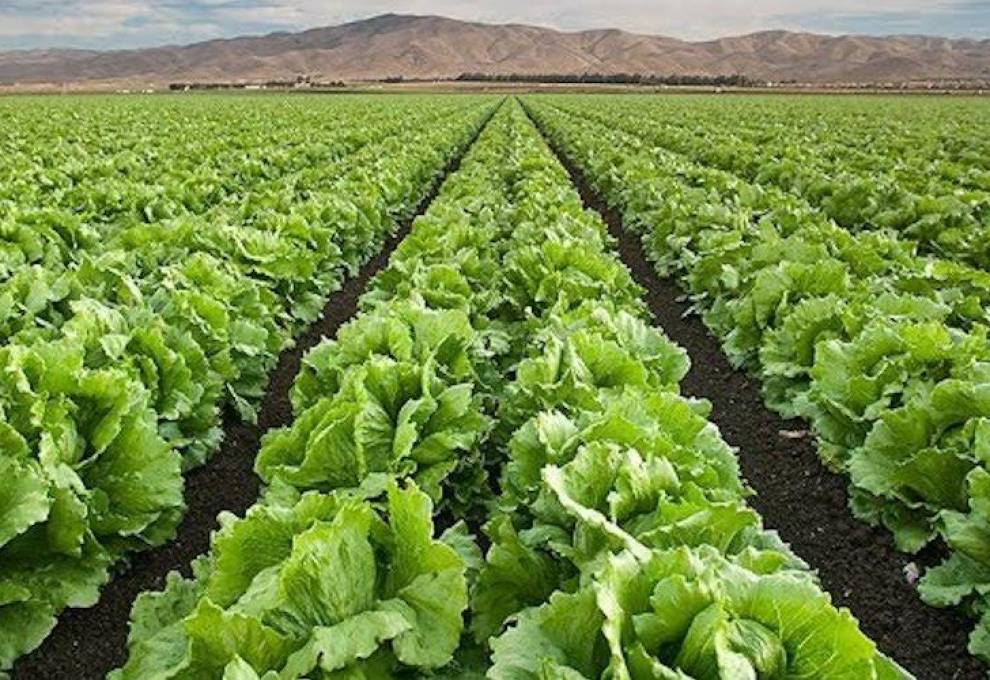
The USDA released its Vegetables and Pulses Outlook in May 2019, citing a mixed bag in terms of fresh market and processed vegetables in the previous year. Production of fresh vegetables was down 10 per cent -- hitting a 19-year low -- while processed vegetables were up seven per cent.
The four largest fresh crops – onions, head lettuce, romaine lettuce and tomatoes – accounted for much of the decline in volumes.
Food Business News summarized the report as follows:
Lower harvested area and yields pushed fresh vegetable production down 10 per cent in 2018 to 35.9 billion pounds, the lowest in 19 years and the largest year-over-year drop during that time. In contrast, 2018 production of processing vegetables was estimated at 35.7 billion pounds, up seven per cent from 2017.
The four largest fresh crops — onions, head lettuce, romaine lettuce and tomatoes — accounted for 46 per cent of total fresh production and 70 per cent of the decline, according to the USDA. Planted area of onions, head lettuce and romaine lettuce was the lowest in 17 years. In contrast, fresh-market production of carrots, snap beans, cauliflower, celery, cucumbers, garlic, spinach and artichokes increased.
Fresh vegetable prices declined about five per cent in 2018 “in spite of lower domestic supply and slightly rising exports, which should put upward pressure on the price,” the USDA reported.
Two foodborne illness outbreaks occurred in 2018, substantially slowing the market for fresh leafy greens. The four largest price drops were 31 per cent for romaine lettuce, 16 per cent for head lettuce, 15 per cent for leaf lettuce and 14 per cent for spinach.
For the full analysis, go here: https://www.foodbusinessnews.net/articles/13846-vegetables-see-mixed-changes-in-processed-fresh-markets
For USDA report, go here: https://www.ers.usda.gov/webdocs/publications/93033/vgs-362.pdf?v=1958.8
Source: Food Business News May 31, 2019
The USDA released its Vegetables and Pulses Outlook in May 2019, citing a mixed bag in terms of fresh market and processed vegetables in the previous year. Production of fresh vegetables was down 10 per cent -- hitting a 19-year low -- while processed vegetables were up seven per cent.
The four largest fresh crops – onions, head lettuce, romaine lettuce and tomatoes – accounted for much of the decline in volumes.
Food Business News summarized the report as follows:
Lower harvested area and yields pushed fresh vegetable production down 10 per cent in 2018 to 35.9 billion pounds, the lowest in 19 years and the largest year-over-year drop during that time. In contrast, 2018 production of processing vegetables was estimated at 35.7 billion pounds, up seven per cent from 2017.
The four largest fresh crops — onions, head lettuce, romaine lettuce and tomatoes — accounted for 46 per cent of total fresh production and 70 per cent of the decline, according to the USDA. Planted area of onions, head lettuce and romaine lettuce was the lowest in 17 years. In contrast, fresh-market production of carrots, snap beans, cauliflower, celery, cucumbers, garlic, spinach and artichokes increased.
Fresh vegetable prices declined about five per cent in 2018 “in spite of lower domestic supply and slightly rising exports, which should put upward pressure on the price,” the USDA reported.
Two foodborne illness outbreaks occurred in 2018, substantially slowing the market for fresh leafy greens. The four largest price drops were 31 per cent for romaine lettuce, 16 per cent for head lettuce, 15 per cent for leaf lettuce and 14 per cent for spinach.
For the full analysis, go here: https://www.foodbusinessnews.net/articles/13846-vegetables-see-mixed-changes-in-processed-fresh-markets
For USDA report, go here: https://www.ers.usda.gov/webdocs/publications/93033/vgs-362.pdf?v=1958.8
Source: Food Business News May 31, 2019

Add new comment